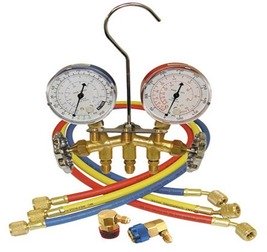
Auto AC repair is one segment of the car repair industry that has many comebacks. When I say the word comebacks I’m referring to multiple repairs of the same system. These repeat failures can happen to both professional car technicians as well as DIY mechanics.
When it comes to my own personal comebacks, AC repairs are at the top of my list. In most cases this is caused by extremely small leaks difficult to pinpoint. In other cases it may be due to the fact I have found problems or leaks and repaired them believing all issues were resolved when in reality something small is still lurking.
Then the air conditioning stops working six months down the road. Whether you’re an automotive consumer or a do-it-yourself mechanic you may run into problems with car air conditioning systems experiencing repeat failures. Even the most caring and experienced mechanics can have problems in this area.
Why so Many Problems with Car AC
One issue with automotive AC is the Freon itself. It is an invisible gas that has no color or odor. Add to this fact the most modern systems only use about 24 ounces of Freon and even a small leak can cause the AC to blow warm air over short period of time.
When you look at the standard automotive air-conditioning system it covers a lot of ground in the engine compartment and even goes inside the car into the dashboard area. Covering this amount of area requires a lot of connections and fittings.
Every one of these is a possible suspect for small leaks. As a car repair customer you may have to find some extra patience to share with your auto repair shop or if you’re a driveway mechanic you may have to be patient with yourself when it comes to auto AC repairs.
How to Reduce Repeat Repairs
For me the number one tool in reducing the comebacks I experience when working on automotive AC is the Freon leak detector. This tool provides a signal when it sniffs or detects refrigerant in the air. I find the Robin air tool very reliable. It provides an audible beeping sound when it see’s this refrigerant.
The larger the leak or the more Freon it senses the quicker and louder the beeping becomes. Really big or high pressure leaks makes the tester scream (siren like). One mistake that is often made by both professional mechanics and driveway technicians is that at least 50 psi of Freon has to be in the system for the leak detector to operate properly. This may require a test charging of the system.
If you’re working on a vehicle with Freon leaks chances are there’s not enough in the system to test it with the leak detector. Another mistake often made when using an AC leak detector is the mechanic will move the sniffing probe too quickly. It is my recommendation not to move it more than 1 inch per second. This will give the leak detector the time it needs to sample the air.
Many people wind up rushing and moving the detector too quickly. You also want to point the probe end below the area being tested because Freon is heavier then air. It will begin to sink towards the ground as it leaks out.
My number one piece of advice to mechanics looking to reduce their auto AC repair comebacks is to take some extra time after you believe all repairs are completed. Perform one last additional ac leak check! When the system is refilled to the proper amount and working properly system pressures will be at their highest with the engine hot and turned off.
It is at this time when a Freon leak detector will be most effective and will be capable of pinpointing even the tinniest leaks. It is these very small leaks that are responsible for large amounts of auto AC repair comebacks.
Repairing automotive systems is easier when you understand how they work. Car AC is covered well on this site. For more information start at this page about automotive air conditioning.
The homepage has instructions on what other kinds of Diy auto repair information and help is available here. You can also find out how to ask questions about DIY auto repair.
One of my favorite pages on this subject provides a pressure diagram and illustrates the flow of Freon through its components. Leaks are more common on the high side components and fittings. This next link takes you to the chart about auto AC repairs.

